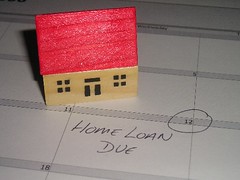What are the steps in the process of buying a property?
Let’s first discuss the steps in buying a property. When purchasing a property, the first step is negotiating the price with the seller. To confirm the booking, you must pay an advance to the seller. A builder must first pay a 10% deposit and sign a booking form before purchasing a property. After the buyer and seller agree on terms, they sign a contract that includes a time period for payment (generally two to three months). But this is not a sale deed. It’s important to note the information, facts and details in a sale deed and here’s everything you need to know.
A sale is completed when the seller transfers ownership rights to the buyer. The deed of sale is drawn up and registered with a specific state authority, making it valid.

What is Sale deed?
The deed of sale is a legal and final document transferring ownership of a property. It describes the terms of the sale and is signed by both the buyer and the seller. Depending on its purpose, a contract of sale may also be called a contract of sale or a contract of sale mortgage. A bill of sale is governed by the common law, the Contracts Act, the Transfer of Property Act, etc. It uses certain terms that are standard across all jurisdictions, but certain details relate more specifically to the Indian context such as consideration (usually the same as the amount paid).
Benefits of Sale deed:
- Protects Parties – A well drafted deed protects both the buyer and the seller by preventing ambiguity and minimizing legal risks.
- Defines The Area – Buyers find it helpful to specify the square footage and locations of properties on paper.
- A sale deed is a legal document that concludes a sale. It is enforceable by law.
Clauses / Elements in the Sale deed you should know:
The sale deed includes the following details:
- Details of the party – The details of the party include the names, ages, and addresses for both buyers and sellers.
- Details of the property – The location of the property, a description of the property, and construction details.
- Payment details – Payment details will show you the price of your property. It also lists the payment mode like a credit card (Visa, MasterCard, Discover) or direct transfer from a bank account.
- Handing over the original papers of the property and the possession details.
- No dues on the property – On the property, no dues, such as loans, tax, liability, and other dues.
- Indemnity clause – An indemnity clause in a sale deed provides protection for the buyer’s interests. It is important to draft the document with care to avoid future disputes. Indemnity clauses under the sale deed seek compensation if there are any losses or expenses in the future.
What is the process for executing a Sale deed?
- Draft sale deed – To execute a sale deed, you need to first draft a sale deed. This document records all of the property owner’s rights, duties, and interests in the property. This includes encumbrances, liens, loans, taxes, mortgages and deeds for neighboring properties if they do not belong to the same legal entity.
- Pay Stamp Duty – Stamp duty is a tax paid to the Indian government on the sale of real estate. It is usually paid by the buyer and varies from state to state. For more details see our detailed video on stamp duty.
- Signed – Both buyer and seller must sign the sales deed. This document ensures that they have both agreed to the terms of the sale transaction. The deed must be registered within four months of the date it was signed in order to be valid.
- Registered – A sale deed serves as both proof of ownership and an essential legal document required for taxation purposes. It is an affidavit signed by both the seller and buyer. This is submitted to the revenue department when registering property under several tax laws. It must be registered within 4 months of signing the document. If this deadline is exceeded, you risk losing your right to purchase the property.
- The seller gives the original documents – The seller delivers the original documents and the buyer pays to execute the sale deed.
The following are the important, procedural, and legal terms you should know about sale deed if you are planning to sell your house.




